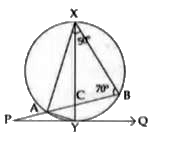In which of the following situations, does the list of numbers involved make arithmetic progression, and why ?
The taxi fare after each km when fare is Rs. 15 for the first km and Rs.8 for each additional km.Solution in Kannada
The correct Answer is:i] it is an AP.
ii] It is not an A.P.
iii] It is an A.P.
iv] It is not an A.P.
Step by step video, text & image solution for In which of the following situations, does the list of numbers involved make arithmetic progression, and why ? The taxi fare after each km when fare is Rs. 15 for the first km and Rs.8 for each additional km. by Maths experts to help you in doubts & scoring excellent marks in Class 10 exams.
Updated on:21/07/2023Topper's Solved these Questions
- ARITHMETIC PROGRESSIONSBOOK - ZEN PUBLICATIONCHAPTER - ARITHMETIC PROGRESSIONSEXERCISE - TEXTUAL EXERCISE (Exercise 1.2)
20 Videos
- ARITHMETIC PROGRESSIONSBOOK - ZEN PUBLICATIONCHAPTER - ARITHMETIC PROGRESSIONSEXERCISE - TEXTUAL EXERCISE (Exercise 1.3)
20 Videos
- ARITHMETIC PROGRESSIONSBOOK - ZEN PUBLICATIONCHAPTER - ARITHMETIC PROGRESSIONSEXERCISE - ARITHMETIC SERIES (ILLUSTRATIVE EXAMPLES)
6 Videos
- AREA RELATED TO CIRCLES BOOK - ZEN PUBLICATIONCHAPTER - AREA RELATED TO CIRCLES EXERCISE - ADDITIONAL QUESTIONS (HIGHER ORDER THINKING SKILLS)
7 Videos
- CIRCLESBOOK - ZEN PUBLICATIONCHAPTER - CIRCLESEXERCISE - ZEN ADDITIONAL QUESTIONS ( HOT [HIGHER ORDER THINKING SKILLS] - QUESTIONS) (IIT AND IMO)
9 Videos
Similar Questions
Fill in the blanks in the following table, given that a is the first term, d the common difference and an nth term of the AP :

View SolutionFind the sum of the following Aps:
(i) 2, 7, 12, …….., to 10 terms.
(ii) −37,−33,−29, …….., to 12 terms.
(iii) 0.6, 1.7, 2.8,….., to 100 terms
(iv) 115,112,110,……,to 11 terms
View SolutionFind the sum of all two digit natural numbers which when divided by 3 yield 1 as remainder.
View SolutionFind the area of the shaded region portion in the given figure if E is the midpoint of AB,AGE and BEF are quadrants, and DOC is a semicircle.

View SolutionIn the adjoining figure, XY is a diameter of the circle and PQ is a tangent to the circle at Y. Given that ⌊AXB=50∘ and ⌊ABX=70∘, calculate ⌊BAY and ⌊APY.

View SolutionIn which of the following situations, does the list of numbers involved make an arithmetic progression, and why?
(i) The taxi fare after each km when the fare is Rs 15 for the first km and Rs 8 for each additional km.
(ii) The amount of air present in a cylinder when a vacuum pump removes 1/4 of the air remaining in the cylinder at a time.
(iii) The cost of digging a well after every metre of digging, when it costs Rs.150 for the first metre and rises by Rs. 50 for each subsequent metre.
(iv) The amount of money in the account every year, when 10000 is deposited at compound interest at 8 % per annum.
View SolutionIn which of the following situations, does the list of numbers involved make arithmetic progression, and why ? (i) The taxi fare after each km when the fare is 15 Rs for the first km and Rs. 8 for each additional km. (ii) The amount of air present in a cylinder when a vacuum pump removes 1/2 of the air remaining in the cylinder at a time.
View SolutionThe taxi fare after each km when the fare is Rs 15 for the first km and Rs 8 for each additional km
View SolutionThe taxi fare after each km, when the fare is Rs. 15 for the first km and Rs 8 for each additional km, does not form an AP as the total fare (in Rs.) after each km . Is the statement true? Give reasons.
View Solutionनीचे दी गई परिस्थिति में सम्बध्द संख्याओं की सूची में कौन A.P. में हैं और क्यों ?
प्रत्येक किमी का टैक्सी - भाड़ा , जब प्रथम किमी का भाड़ा 15 रु0 और अतिरिक्त प्रत्येक किमी का भाड़ा 8 रु0 हैं ।
View Solutionनिम्नलिखित स्थितियों में से किन स्थितियों में सम्बन्ध संख्याओं की सूचि A.P. है और क्यों?
प्रत्येक किलोमीटर के बाद का टैक्सी का किराया,जबकि प्रथम किलोमीटर के लिए किराया रु15 है और प्रत्येक अतिरिक्त किलोंमीटर के लिए किराया रु8 है|
View SolutionIn which of the following situations, does the list of numbers involved make an arithmetic progression, and why?
(i) The taxi fare after each km when the fare si Rs. 20 for the first km and rises by Rs. 8 for each additional km.
View SolutionIn which of the following situations, does the list of numbers involved make arithmetic progression, and why ?
The taxi fare after each km when fare is Rs. 15 for the first km and Rs.8 for each additional km.
View SolutionIn which of the following situations, does the list of numbers involved make an arithmetic progression, and why? (1) The taxi fare after each km when the fare is ₹15 for the first km and ₹8 for each additional km.
View SolutionThe taxi fare after each km, when the fare is Rs. 15 for the first km and Rs 8 for each additional km, does not form an AP as the total fare (in Rs.) after each km is 15,8,8,8,…. Is the statement true? Give reasons.
View SolutionIn which of the following situations, does the list of numbers involved make an arithmetic progression , and why ?
The taxi fare after each km, when the fare is Rs 15 for the first km and Rs 8 for each additional km.
View Solution
